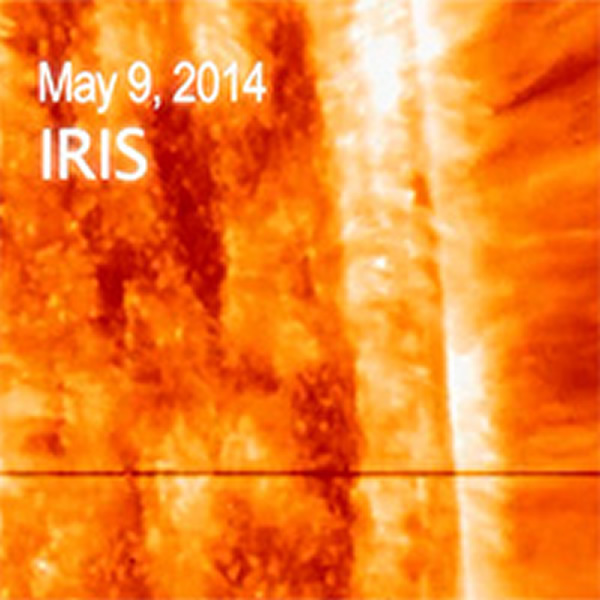Space Telescope Gazes Deep Inside Powerful Solar Eruption
CMEs — coronal mass ejections — are some of the most energetic and powerful events that can regularly occur on our sun. Created by huge looping magnetic fields that rise up from deep inside our nearest star, carrying solar plasma along for the ride, a CME occurs when the magnetic field “snaps” and flings its load of stellar material out into the solar system.
If the outward-bound cloud of material happens to collide with Earth, usually several days later, the resulting geomagnetic storm effects can range from increased auroral activity across upper-to-middle latitudes to actual physical damage to satellite electronics and sensitive equipment on the ground.
One particularly powerful CME in 1989 illuminated auroras as far south as Florida and caused a blackout across the entire province of Québec!
On May 9 of this year a CME erupted from the sun and was caught on camera by NASA’s Interface Region Imaging Spectrograph (IRIS) spacecraft, the first to be captured by the orbiting observatory. Because IRIS is specially designed to observe close-up portions of the Sun’s chromosphere and transition region in high definition, this is the best view yet of what happens near the “surface” of the sun during such an event.
Because IRIS’ imaging area has to be programmed a day ahead of time, catching a CME in action involves quite a bit of luck.
“We focus in on active regions to try to see a flare or a CME,” said Bart De Pontieu, the IRIS science lead at Lockheed Martin Solar & Astrophysics Laboratory. “And then we wait and hope that we’ll catch something. This is the first clear CME for IRIS so the team is very excited.”
The video above shows the May 9 CME sending a huge gout of solar material streaming out from the sun at 1.5 million miles an hour, in an area about seven times the size of Earth.(Jun 3, 2014 11:15 AM ET // by Jason Major )












